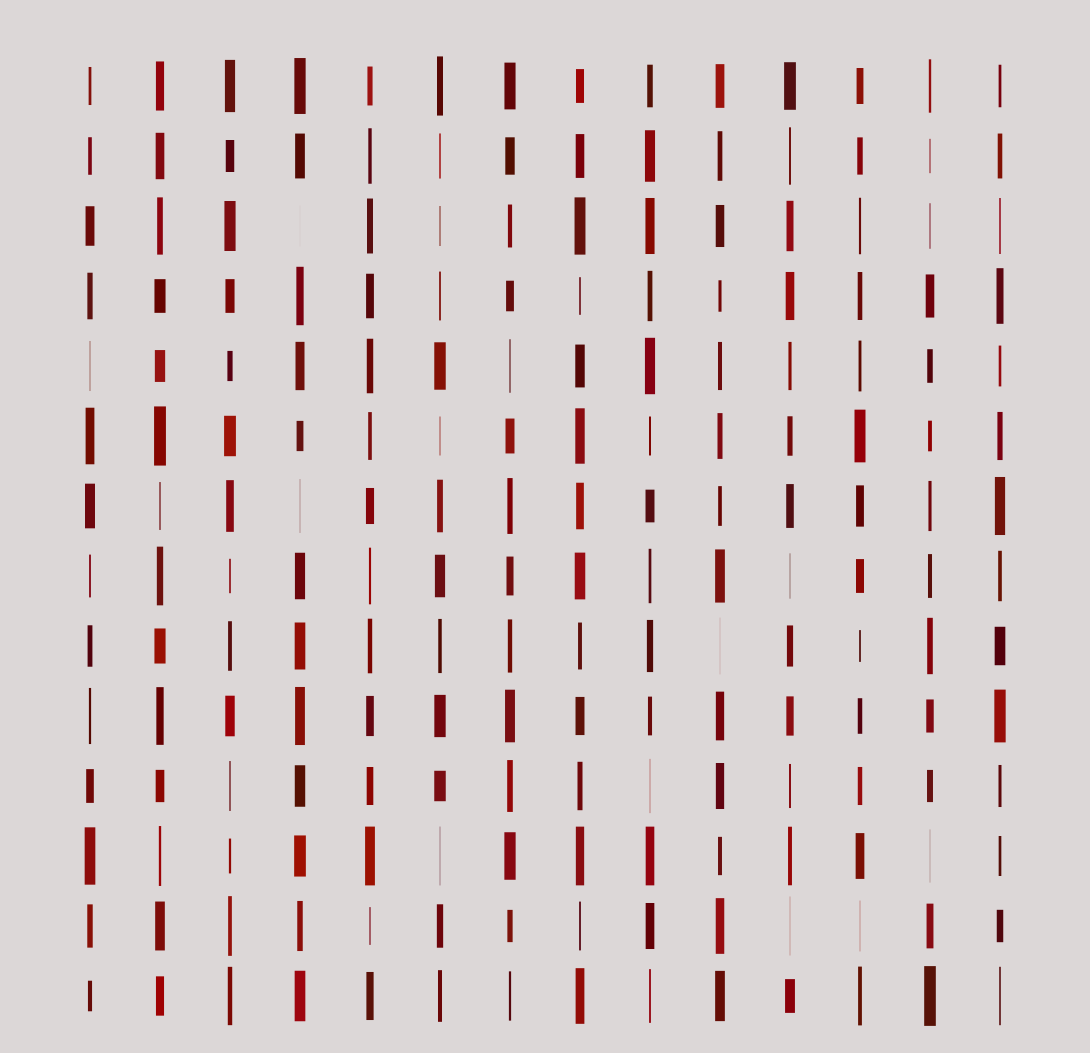
In this series, I have produced three coherent works that utilize a stochastic element disrupting structure as a response to Georg Nees. The result established itself in three separate works that resemble vortexes. Taylor writes, “The computer works by Nake, Nees, and Noll that emerged in the first year all utilized programs that generated random results.” The random chance factor introduced by the computer, and the interest of it, became a huge factor within computer art discourse. Taylor explains, “The random chance factor allows the computer to make unpredictable and arbitrary selections without subjective involvement, an attribute not possible in humans.” The stochastic aspect of art can only truly be allowed with the computer, which meant computer art had an element to accurately separate it from traditional art. I find that the involvement of randomness allows the computer artist to develop a work in a relation with the computer, instead of solely using the computer to create a work.
Without the reality of the computer and it’s ability to introduce stochastic elements into the code to create art, this series would have not been able to come into existence. The factor of randomness seemed to guide certain choices I had to make within the art. This results in what can be described as a frustrating experience, the slightly stressful situation of not knowing whether or not the random change introduced by the machine will be coherent with what the artist’s vision for the artwork is. If the random change is not what was the artist aspired to achieve, the artist is then forced to go through the code and pick and choose different elements of the code to introduce a random factor to, and continue to check if each change produced a desirable result.
For this series, that was exactly the case. Each work was a sequence of repositioning random factors in code to produce a desired change, and ultimately the finished work itself. The finished product however, is animated, and it’s difficult to capture the entirety of it’s design with static images.


In Nees’ work, randomness is not truly seen on it’s own. The random elements in Nees’ work are in relation to some structure, but ultimately breaks or disturbs the structure it came from. I tried to emulate this concept in a way that could be apparent, but not an exact replica of his work. Taylor writes, “The stochastic procedures implemented in Georg Nees’ 23-Corner Graphic provide a good example of the way random parameters and generative functions produce variation in figure and form.” A repetition of forms can be produced, but the variation within them results from the randomness implemented by the computer.
Taylor mentions the limited amount of computational processes available to computer artists starting out, however, despite the limited resources, the variation in computer art had a significant range. Even within a single series, the variation is significant. Changing or relocating a line of code can create an entirely new piece. For instance, several trials for each work were in place before I was satisfied with the finished product. Even between the trials of one piece, the difference is apparent.


The completed work with the animated element, not shown here in the static image, introduces even more visible differences between trials. Using just one program, with ultimately somewhat similar code, drastically varying pieces can be created. Using other processes would further vary the range of work that could be completed. Using random elements in code further extends the possibilities. Georg Nees happened to be inspired by this type of code, utilizing the talents of the computer for his work. With the resources available, this style of computer art is very sensible, but still an engaging way to create.


